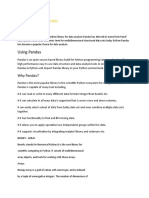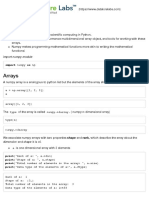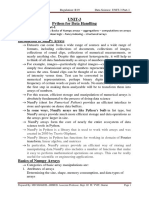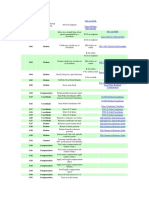0% found this document useful (0 votes)
9 views24 pagesWeek 3 Numpy, Pandas, Data Visulisation
The document provides an overview of NumPy and Pandas, focusing on array creation, manipulation, and basic operations using NumPy, as well as the creation and handling of Pandas Series and DataFrames. It includes examples of array operations, aggregation functions, and the use of lambda functions, map, filter, and reduce. Additionally, it covers data transformation techniques such as melting and pivoting in Pandas.
Uploaded by
gurugowda733Copyright
© © All Rights Reserved
We take content rights seriously. If you suspect this is your content, claim it here.
Available Formats
Download as PDF, TXT or read online on Scribd
0% found this document useful (0 votes)
9 views24 pagesWeek 3 Numpy, Pandas, Data Visulisation
The document provides an overview of NumPy and Pandas, focusing on array creation, manipulation, and basic operations using NumPy, as well as the creation and handling of Pandas Series and DataFrames. It includes examples of array operations, aggregation functions, and the use of lambda functions, map, filter, and reduce. Additionally, it covers data transformation techniques such as melting and pivoting in Pandas.
Uploaded by
gurugowda733Copyright
© © All Rights Reserved
We take content rights seriously. If you suspect this is your content, claim it here.
Available Formats
Download as PDF, TXT or read online on Scribd
/ 24





























































































